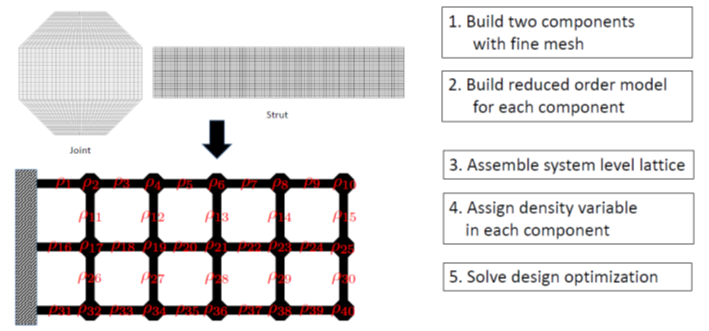Achieving 3D microstructures having high stiffness with light weight is an important goal for LLNL’s advanced materials and manufacturing capabilities. Current state-of-the-art approaches of designing these microstructures are either too expensive & restrictive, or too cheap & inaccurate. A new approach is needed that not only is fast, but also accurate.
Beam Element-based Topology Optimization (“BETO”) is one of the conventional ways to design microstructures. It starts with an initial design that is composed of many beam elements. LLNL’s invention uses accurate Component-wise Reduced Order Models (“CWROM”) rather than the inaccurate beam elements. In doing so, the process becomes computationally efficient and fast, as each reduced order model is independent, thus leading to parallel computations. LLNL researchers anticipate the CWROM-based design algorithm and uncertainty quantification techniques to be implemented in the following LLNL codes: MFEM, LiDO, and libROM.
Image caption: Optimization using component-wise ROM
- Fast and accurate computations and simulations
- Applicable to uncertainty quantification to determine effects of manufacturing flaws on system performance
- Extendable to nonlinear problems
- Efficient lattice design optimization using Reduced Order Models (ROM)
- Lattice structure alternative to save fuel consumption by reducing weight in aerospace and automotive industries
- Smart honeycomb structure to design protection equipment from impact
- Shoe or helmet design for safety
Current stage of technology development: TRL-3
LLNL has patent protection and copyrights on this invention.
U.S. Patent No. 11,514,210 Component-wise Reduced-Order Model Design Optimization such as for Lattice Design Optimization issued 11/29/22


